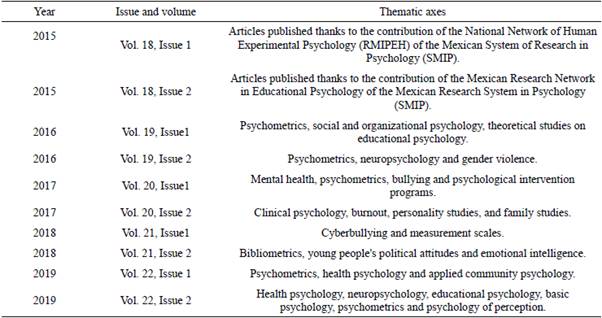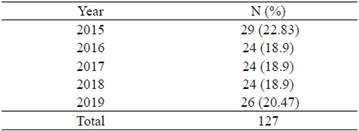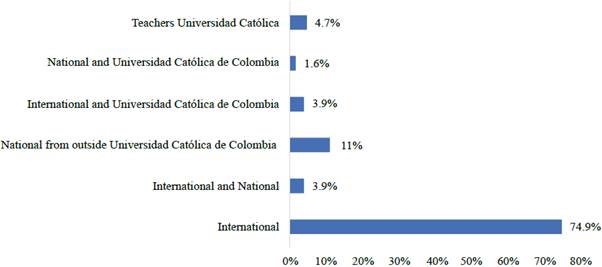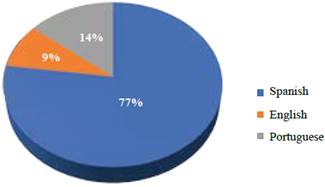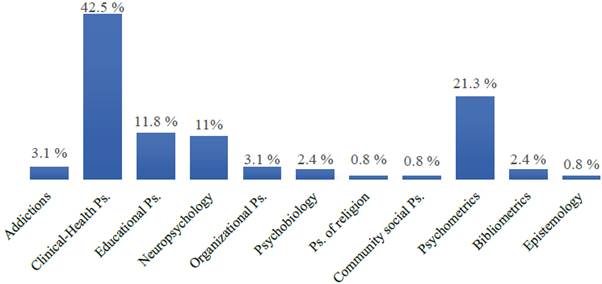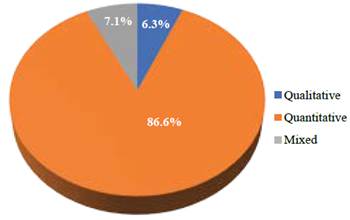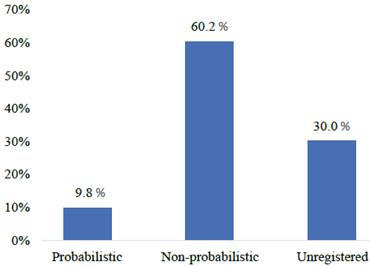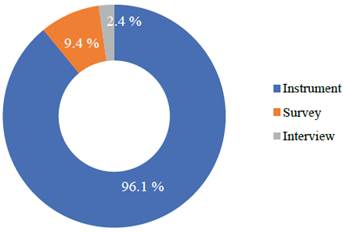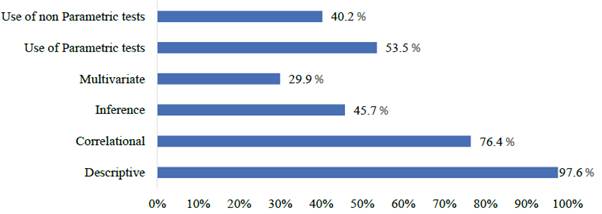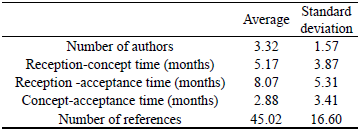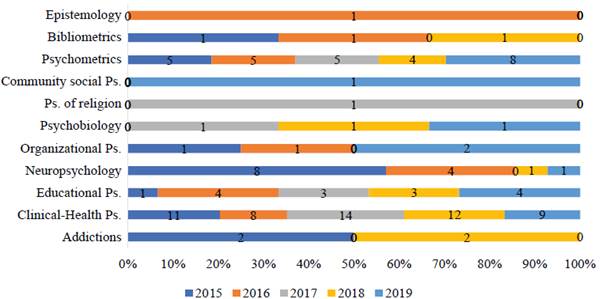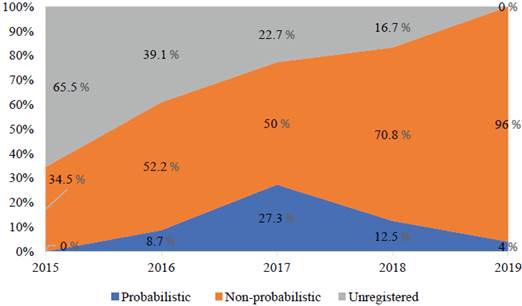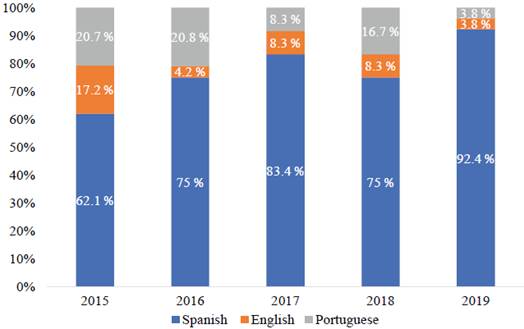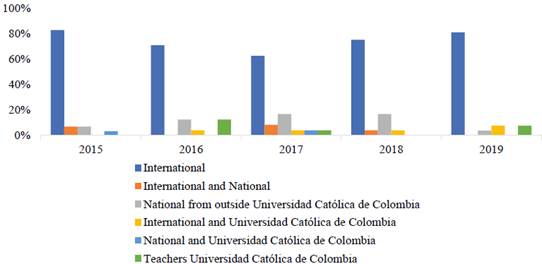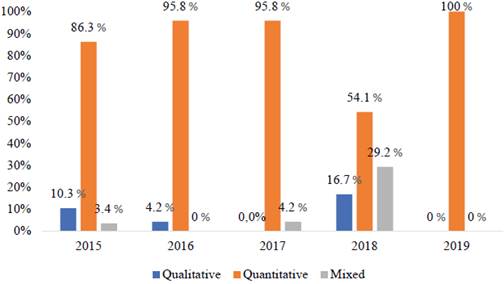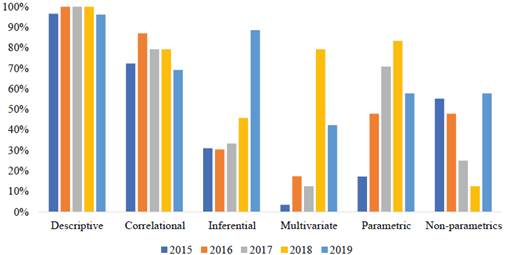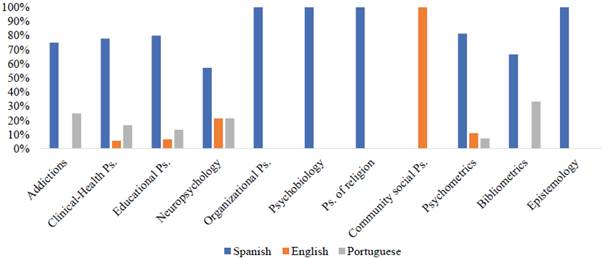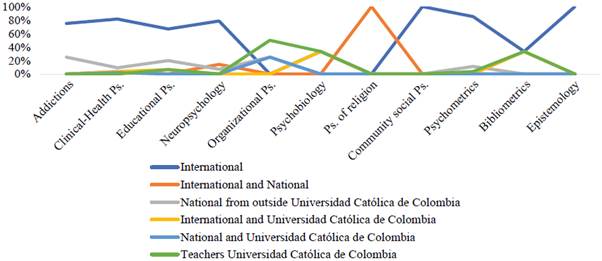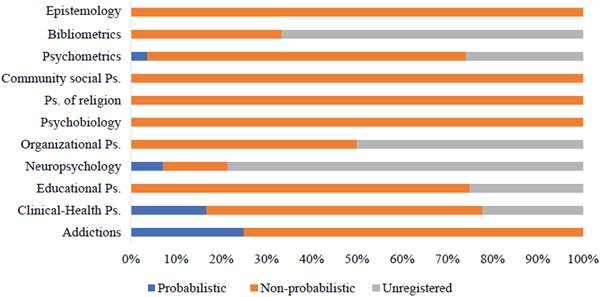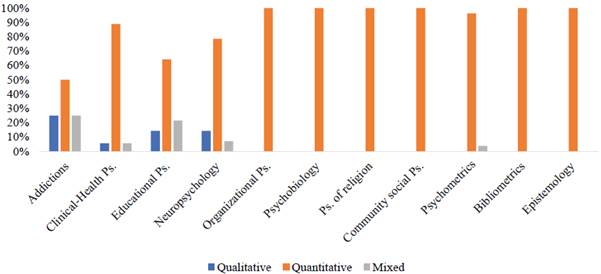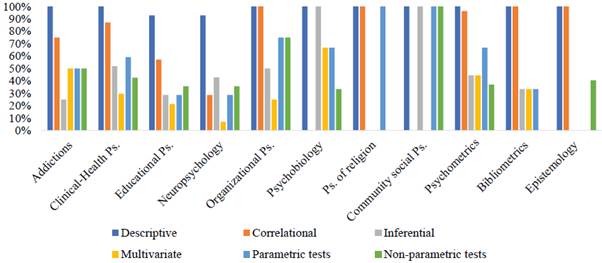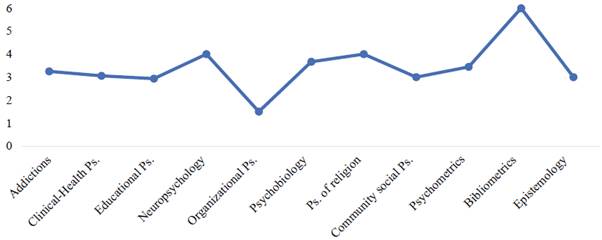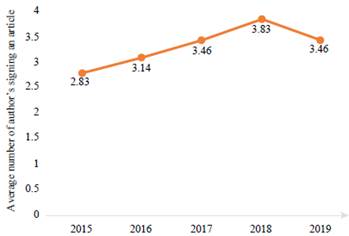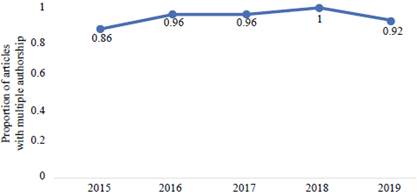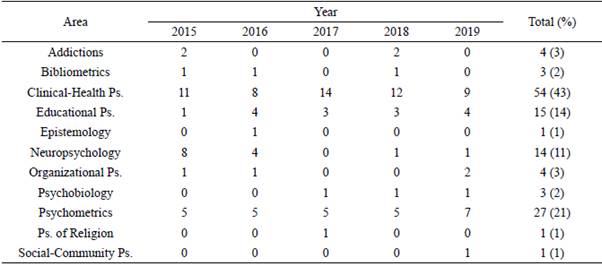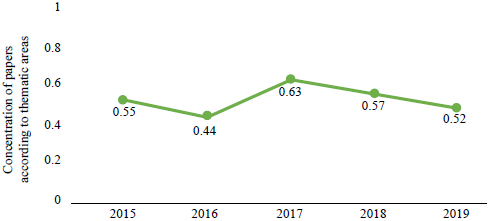Introduction
Studies on the evaluation of the productivity of science from scientific journals are increasingly common and pertinent for disciplinary and professional advancement (Aguado-López, López-López, Becerril-García, & Salas, 2017; Fierro, Brisuela -Blume, Bruma, & Biglieri, 2017; Morgado-Gallardo et al., 2018; Puche-Navarro & Ossa, 2012) and have been considered the first step to analyze the dynamics of an academic community (Vinkler, 2010).
Robert Merton thought that a good scientific practice consists of sharing the results with others and scientific progress can be measured by the growth in the number of authors, citations, publications, among other variables (Daniel, 2005; Millán, Polanco, Ossa, Béria, & Cudina, 2017). Thus, science, according to bibliometrics, behaves like a communication system made up of authors, articles and discourses connected by a determined semantic code (Leydesdorff, 2007).
Every time the challenge of carrying out bibliometrics on a scientific journal in a particular area is undertaken, care must be taken not to fall into a kind of descriptive and celebratory journal, in other words, to turn the bibliometric study into a simple tribute (see, Kamdem, Duarte, Rodríguez-Lima, Batista-Texeira, Waseem-Hassan, Marivando-Barros, Roeder, & Tsopmo, 2019; Milfont, Amirbagheri, Hermanns, & Merigó, 2019; Sigué, 2019; Wang, Lim, & Lyons, 2019).
Bibliometric studies carried out on the academic production in Latin American scientific journals of psychology have revealed the situation ofthe discipline, its problems, and national and regional challenges (Cudina, Millán, & Ossa, 2017; Jaraba-Barrios, Guerrero-Castro, Gómez- Morales, & López-López, 2012; López-López & Calvache, 1998; Salas et al., 2017).
The use of journals allows seeing, in addition to the progress of the scientific activity, some structural issues such as the effects of national scientific incentive policies, the editorial infrastructure or phenomena derived from the increasingly turbulent scientific activity (Calver, Lilith, & Dickman, 2013; Huang, Zhang, Guo, Zhu, & Porter, 2014).
This study will continue the path of two previous works linked to the Journal Acta Colombiana de Psicología [hereinafter referred to as Acta] (Ravelo, Mejía, & González, 2016; Salas et al., 2018) which allow a descriptive and bibliometric analysis of the journal to examine its evolution, trends and strategy implementation for its continuous qualification, regarding its quality, visibility, impact and geographic coverage, among others.
Since its foundation in 1998 within the Faculty of Psychology of the Universidad Católica de Colombia, Acta has become a dissemination platform and an "indicator" that allows tracing a part of the psychological research in Colombia and Latin America, as has been evidenced in previous bibliometric and historical studies (Ardila, 1999; Ravelo et al., 2016; Salas et al., 2018; Salas et al., 2019).
The journal began its publication with an annual issue until 2000, and from then on, it has published its issues every six months. The first editorial, in charge of Professor Carlos Vargas Ordóñez - who served as Dean of the Faculty of Psychology at the Universidad Católica de Colombia -, outlined the journal's editorial project, making it clear that it would be committed to the conceptual advancement and practical application of psychology, especially in the clinical, educational and psychometric fields (Vargas-Ordóñez, 1998).
The opening of the Centro de Estudios e Investigaciones sobre las Adicciones CEIA-UCC [Center for Studies and Research on Addictions - (CEIA-UCC, for its Spanish acronym)] by the Faculty of Psychology in 1997, influenced the agenda of the papers published in the first and fourth issues, which focused on drug dependence and the treatment of addictions (Flórez-Alarcón, 1998, 2000). The second and third issues, following the modality of special issues, had educational psychology as the main theme, in charge of the teachers Beatriz Molano García and Martha Cecilia Lozano Ardila in the role of invited editors (Lozano-Ardila, 2000; Molano-García, 1999).
The fifth issue was devoted to psychometric studies, while the articles of the sixth issue addressed the subject of legal psychology and its interdisciplinary relationship with Law, as an outcome of the opening of the postgraduate course in the same field (Vargas-Espinosa, 2001). The tenth issue tried to advance basic psychology from the studies of several national researchers and the same faculty (Cruz-Becerra, 2003). Finally, the eleventh and twelfth issues were directed at organizational and social psychology.
Acta's editorial and scientific work is closely related to the development of professional fields not so common in psychology in Colombia, which are called areas with a lower percentage of professionals (e.g., Ardila, 1999) . Acta has also been a means of internationalization of Colombian psychology, so that it was one of the first journals in the country to be indexed in databases such as PSICODOC of the Colegio de Psiólogos de Madrid, and quickly submitted to evaluation for inclusion in PsycINFO of the American Psychological Association (Ardila & Pérez-Acosta, 2010; Pérez-Acosta, 2002).
This research article focuses on the last five years, given that an earlier study examined the previous five-year period (Ravelo-Contreras et al., 2016). In the 2015-2019 period, Acta has published ten issues that are distributed in the thematic axes shown in Table 1 below.
Even though the journal ceases the publication of the special issues, all its articles count on the participation of authors from various institutions and are geared towards interdisciplinary and contextualized research on issues appearing as a result of changes in society and their impact on the individual, the family, the culture, the collective, etc.
As a consequence of the demands of some international databases and indexes, of the need to obtain greater visibility in academic communities and trying to increase the geographical coverage of readers, the articles published have been translated into English and Portuguese since 2016 (Ravelo-Contreras, 2016). In that same year, thanks to the support of its publishing institution, Acta was classified in category Q3 in the Scimago Ranking and was granted category B in Publindex, both ponderable facts for the history of psychology publications in Colombia (Ravelo-Contreras, 2017). In 2019, Acta celebrated 22 years of uninterrupted publication and has become a means for the creation of national and international networks. This study will objectively show, through indicators and bibliometric techniques, how the journal has evolved in the last five years.
Method
Type of study
A descriptive retrospective ex post facto bibliometric study was carried out from articles published by a scientific journal (Montero & León, 2007; Utap-Anyi, Zainab, & Anuar, 2009). The following indicators were used: the total number of articles, the sex of the authors, the language of the publication, the productivity index, the collaboration indexes (Subramanyam, Lawani), the thematic concentration measurement index (Pratt), the country of affiliation, the thematic areas, as well as the methodologies and designs implemented in each article (Alhuay-Quispe, & Pacheco-Mendoza, 2018; Egghe, 1988; Subramanyan, 1983; Travis-Nichols, 1989).
Study sample
A total of 127 articles published in the period 2015-2019 were examined. The analysis only considered scientific articles and excluded editorials, institutional information and reviews.
Instruments
For establishing the database, an Excel spreadsheet was built, which was fed with all the journal documents. This database was created with information from the journal's official website (https://bit.ly/2AGLHcn).
Procedure
Once the empirical corpus was established, the information was organized in a database to be analyzed through classical bibliometric indicators and some metrics common in studies about ajournal's academic production. (Lievrouw, 1989; Bonnevie, 2002; Tsay, 2003; Tsay, Jou, & Ma, 2000).
Data analysis
The mining of the empirical corpus was performed based on the information obtained from the journal and verified through the Scopus database. Descriptive indicators, as well as productivity, collaboration and thematic concentration indexes, were calculated with the support of a spreadsheet in the Excel program and the statistical package IBM SPSS version 23.
Results
To attain the objective of the study, descriptive analyzes (frequencies and percentages) were performed for each of the categorical variables. As for the quantitative variables, these were represented through the mean and standard deviation. Finally, the bibliometric indices already described were calculated.
Descriptive results by variable
Analysis of categorical or qualitative variables As shown in Table 2, between 2015 and 2019 the Journal Acta Colombiana de Psicología has published 127 articles. The number of articles per year varies between 24 and 29 articles.
Figure 1 shows that 74.8% of the authors who have published during the years 2015 to 2019 correspond to international researchers, 11% to national authors external to the Universidad Católica de Colombia, while a smaller number of papers are carried out by teachers of the institution (4.7%).
Regarding language, 77% of the articles were originally written in Spanish, 14% in Portuguese and 9% in English (see Figure 2). However, since 2016, all articles have been published in English and Spanish.
According to the journal's area of knowledge, 42.5% of the articles published correspond to the area of clinical or health psychology, followed by 27 articles (21.3%) of psychometrics. Educational psychology contributes with11.8% and neuropsychology with 14 (11%). (See Figure 3).
Concerning the type of research published, 87% correspond to quantitative studies, 6% to qualitative studies and 7% to mixed methodologies (See Figure 4).
About the type of sampling, 60.2% ofthe articles reporting it applied non-probability sampling, and 9.8% used a probability sampling (see Figure 5).
Regarding the instruments used, 96.1% of the articles employed instruments for information gathering, 9.4% used surveys, and 2.4% of the articles applied interviews (See Figure 6)
On the other hand, it was found that 124 studies (97.6%) carried out descriptive analyzes. This percentage is followed by 76.4% that used correlational analyzes. Likewise, it was observed that 53.5% of the investigations performed parametric tests, while 40,2% of the studies used non-parametric tests and 29% of the studies performed multivariate analyzes. The results are shown in Figure 7.
Analysis of quantitative variables
The results of the analysis of the quantitative variables are presented below. For each case, the average and the standard deviation are shown. The average number of authors per article is between 3 and 4. In terms of the difference between the time the article and the concept are received, an average of 5.17 (± 3.87) months is found, whereas the average duration between issuing the concept and accepting the paper is 2.88 (± 3.41) months (see Table 3).
Crosses by years
Once the descriptive analyzes were performed for each of the variables, the comparison by years was carried out. According to the data registered in figure 8, the submission of articles by authors in Spanish, their original language, has predominated. It is noteworthy that in 2015, 17.2% were published in Portuguese.
Likewise, it is evident there is a predominance of publications of international authors in all years, followed by Colombian authors from outside the Universidad Católica de Colombia (see Figure 9).
Figure 10 describes the number of publications according to the area of knowledge, distributed by year. The increase in psychometric articles in 2019 is worth mentioning.
Regarding the type of sampling, the use of non-probability sampling predominates (see Figure 11). It is noteworthy that the percentage of articles that do not report the type of sampling used has reduced over the years. In the year 2019, there was a report of this percentage in 100% of the studies.
Concerning the type of research used, the quantitative type is predominant with a percentage between 54.2% and 100% of the articles (see Figure 12).
More than 90% of the investigations used descriptive analysis. On the other hand, the use of correlational analyzes is evident in more than 65% of them, while inferential analyzes increased their use in 2019. In the last year, the use of non-parametric tests decreased (See Figure 13).
Crossings by area of knowledge
In addition to the comparisons by year, an analysis by area of knowledge was done, whose results are presented below. Figure 14 shows that the publication in Spanish prevails as the original writing language of the studies. The publication in Portuguese in areas such as bibliometrics and addictions is noteworthy.
On the other hand, it is noteworthy that in some areas, international authors have written more than 50% of the articles. They stand out in social-community psychology, epistemology, clinical and health psychology, addictions and neuropsychology. (See Figure 15.)
Regarding the type of sampling, the use of non-probability sampling predominates in most areas. Probabilistic sampling presents high percentages in neuropsychology, organizational psychology and bibliometrics (see Figure 16).
As can be seen in figure 17, the use of quantitative research stands out in all areas. However, in fields such as addictions, clinical -health, educational and neuropsychology, qualitative or mixed research is employed.
Figure 18 shows the use of statistical analyzes in each of the areas. All of them use descriptive analyzes, with percentages higher than 90%. As for correlational analyzes, psychobiology and community-social psychology do not apply them. All areas employ inferential analyzes, except for psychology of religion and epistemology, while addictions, psychobiology, and psychometrics use multivariate analyzes with percentages higher than 40%. Also, all areas apply parametric tests, except for epistemology, and all of them employ non-parametric tests, except psychology of religion and bibliometrics.
Figure 19 shows the results of the average number of authors by area. The area that registers more authors is bibliometrics with an average of 6.0 authors, followed by neuropsychology and psychology of religion with 4.0 authors on average, while the organizational area shows between one or two authors per study.
Distribution of contributions
Table 4 shows the publication distribution according to the sex of the first author and the total number of authors. Considering both indicators, there is a higher number of women who have published in Acta.
Table 5 shows the number of contributions per author and the Productivity Index (PI). For the PI calculation, data were organized according to the number of contributions per author. It was found that 371 authors had one contribution; 23 authors, had two; one author, three, and another author, four. Then, the natural logarithm of the number of contributions per author was obtained.
The calculation of this value allowed classifying the authors by production levels. Thus, the authors were grouped into: a) small producers (PI = 0), b) medium producers (PI <1), and c) large producers (PI > 1). Considering the PI values, a total of 371 (93.69%) authors were located at the small producers level, while 25 (6.81%) authors were at the medium producers level. No major producers were found, which can be explained by two reasons: a) the analysis period included five years, b) Acta's editorial policy is that the authors can only have one publication in every issue of each volume.
Collaboration
To analyze collaboration, the Lawani and Subramanyam indices were calculated for each year of publication. Figure 20 shows the Lawani index indicating the average number of authors who signed an article. It can be seen that these values varied between 2.83 (2015) and 3.83 (2018), with an average of 3.32 for the period 2015-2019. To obtain these values, a calculation was done on the weighted average of authors who signed the articles per year and the period of analysis.
Figure 21 shows the Subramanyam Index indicating the proportion of multiple authorship. As the value approaches one, it means that there is a greater number of papers published with multiple authorship. It can be seen that for the 2018 period, the value of 1 is reached, which allows interpreting that in that year all the articles published by Acta had two or more signatory authors. The average number for the period 2015-2019 is 0.94.
Themes and methodologies
Table 6 shows the distribution of articles according to the thematic areas.
To analyze themes concentration, the Pratt Index was calculated for each publication year. Figure 22 shows the Pratt Index indicating the concentration of articles according to each subject area and noting that these values ranged from 0.44 (2016) to 0.63 (2017), where 0.68 is the value for the period 2015-2019. The estimation of these values was made following the proposal by Gorbea Portal (2007) whereby the researchers set 11 categories of thematic classification.
Discussion
This study corresponds to the third of two previous studies (Ravelo et al., 2016; Salas et al., 2018), as a response to the strengthening of the line of research in bibliometric studies, based on what Acta published. During the working window of the present study, the production responds to 127 articles, two more than those published in the period 2010-2014. Concerning this last period, the percentage of publications by international authors increased by 14.3%, going from 60.5% to 74.8%. The production by areas maintains leadership in Clinical and Health Psychology (38.4% in the period 2010-2014 and 42.5% in the period 20152019). It is important to highlight that in this last period, the percentage of papers published by the Psychometrics area was 21.3%, compared to 12.8% in the period 2010-2014.
The quantitative research remains at 87%, and the mixed research increases by 4.3%. There is also an increase in the use of instruments, going from 70.6% in the period 2010-2014 to 96.1% in the period 2015- 2019. Regarding the type of sampling used for information gathering, the percentage of publications that do not record it decreased from 43.2% to 29.1%. There is still a high percentage of use of descriptive analysis (97.6%), as well as correlational statistics which went from 38.6% to 76.4%.
The average number of authors per article went from 2.64 in one five-year period to 3.32 in the next, while the average number of references increased by 6, from 39 to 45. Likewise, it is noteworthy that the time elapsed between the receipt of the document and its acceptance decreased by 3.18 months, which shows the successful and strategic management of the journal's editorial team regarding the time dedicated to the arbitration process.
On the other hand, the collaboration indices used in this study show an increase in this dimension, an issue that is promoted with open access (Gabrielle Breugelmans et al., 2018) or is associated with an increase in citations in the case of international collaboration (Gonçalves et al., 2019). The thematic concentration of the journal is approaching a medium level, an issue that is important to maintain.
Although Acta is a general journal (miscellaneous), that is, open to a variety of topics in psychology, data show that there is a natural inclination towards clinical psychology. This could obey to the "intellectual history" of the journal, a construct referring to the theoretical coherence existing in publications since its foundation (Comins & Leydesdorff, 2016).
Safeguarding the thematic tradition of a journal is not a trivial matter, but it becomes increasingly difficult when it comes to meeting internationalization and impact criteria on high-quality information systems (Navarrete-Cortes, Fernández-López, López- Baena, Quevedo-Blasco, & Buela-Casal, 2010). Acta has fully complied with the issue of internationalization of most of the authors and their contributions. Likewise, it has also been included in the Emerging Sources Citation Index (ESCI) of Web of Science, which constitutes a strength to gain visibility in the scientific world and expand its geographic coverage regarding the reception of articles.
It is very important to highlight the journal's good editorial practices, such as the decision to translate all its articles into English, having a good average time span between receiving the paper and sending the evaluative judgement, as well as avoiding falling into certain logics of the mass production such as the phenomenon known as Hyper-authorship, that is, the publication of articles with a disproportionate number of co-authors, generally more than 35 (Ahmed, Maurana, Engle, Uddin, & Glaus, 1997; Cronin, 2001).
The challenges Acta, and in general Latin American journals have, are aligned with some issues among which are: increasingly seeking cooperation between Latin American journals and establishing networks leading to the strengthening of editorial infrastructure, visibility and citation impact (López-López, 2019). It is very important to highlight that both Acta and other Latin American psychology journals are projects with the enormous challenge of continually reinventing and transforming themselves: firstly, regarding the existing asymmetry between Latin American journals in terms of international production (Jaraba-Barrios, Guerrero-Castro, Gómez-Morales, & López-López, 2011) and secondly, concerning some mistakes in the evaluation policy of scientific journals (Publindex) in Colombia (López-López, 2019).











 text in
text in 

